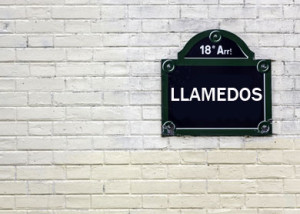 English House Names, edited by Leslie Dunkling, was the first publication of the Names Society in 1971.The whole project was initiated by a class of mature students which Dunkling was teaching in a Northampton college in 1967. Suggestions were made as to what sort of project the students might like to undertake. House names was the popular choice and before long eager students were trawling the suburban streets of Northampton. This small-scale research topic soon grew into a national one thanks to a letter in the Timesand a feature on BBC and local radio. Academics joined in the hunt and within three years the Names Society, as the research group called itself, had assembled enough data to publish English House Names in 1971.
English House Names, edited by Leslie Dunkling, was the first publication of the Names Society in 1971.The whole project was initiated by a class of mature students which Dunkling was teaching in a Northampton college in 1967. Suggestions were made as to what sort of project the students might like to undertake. House names was the popular choice and before long eager students were trawling the suburban streets of Northampton. This small-scale research topic soon grew into a national one thanks to a letter in the Timesand a feature on BBC and local radio. Academics joined in the hunt and within three years the Names Society, as the research group called itself, had assembled enough data to publish English House Names in 1971.
The first important point made by Leslie Dunkling is that rented homes are ‘almost never ‘ found with names. How true this is today, when there are more rented homes than at any other time in recent history, is open to debate. But back in 1971 it was probably the case. The naming of a house, or the renaming of it, was without doubt the action of a home-owner proud that they had joined the property-owning elite and were thus free to impose their imagination, or lack of it, on their new acquisition. Another interesting discovery by the researchers is that there is a much higher proportion of jokey names ( and I’m afraid there are an awful lot of variations on such hardy perennials as Thisldo, Dunroamin, and Bedside Manor) in the south of England than in any other region. No reason is offered for this. It is also revealing to discover that in 1971 French remained the most popular foreign language for house names, even though some house-owners couldn’t pronounce or even spell the names they had chosen. But in an era of foreign holidays in the sun Spanish was making rapid headway. However, Dunkling rather solemnly noted that ‘house names in German are noticeably few’, as are those in Old or Middle English. Generally, though, any working-class home-owner spurning their native language for a foreign one was regarded by others in their class (according to the research ) as ‘ showing off ‘. Dunkling rightly suggests that such social attitudes deserve further academic investigation. It is certainly worth discovering if attitudes have changed since 1971.
Dunkling assembles the usual suspects—house names that combine elements of the names of the owners, names that recall favourite holiday destinations, that remind the owners of happy incidents in their past, of the time of year in which they moved in, or how much the new home cost. All rather dull, and indeed solipsistic, it must be said. There are houses named after the nearness of certain features ( mainly trees, rivers, mountains ), favourite authors or works of literature ( Lorna Doone, Maigret , Innisfree. We learn, for instance, that Yehudi Menuin named his Swiss home ‘ Chalet Chankley Bore ‘ after one of Edward Lear’s poems. Continue reading
